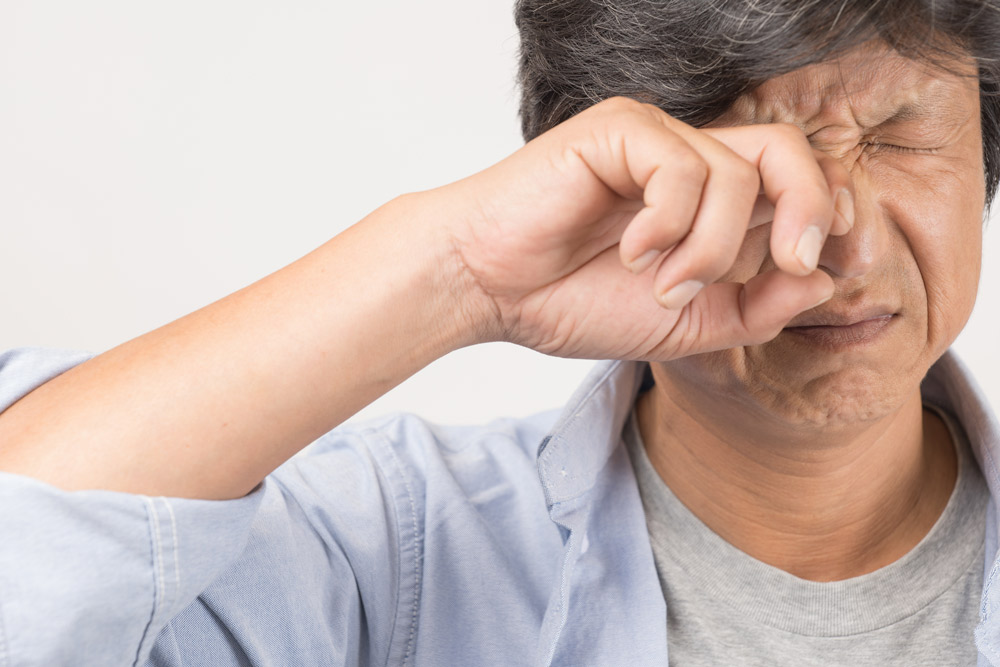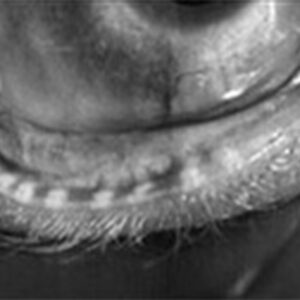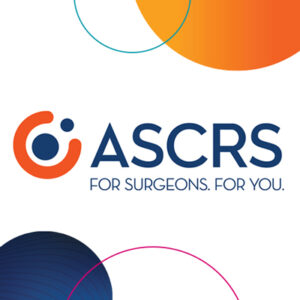Refractive
April 2022
by Liz Hillman
Editorial Co-Director
To patients, eye rubbing might seem innocuous, but to the ophthalmologist, it’s an action that can have sight-threatening consequences and is something that patients should be warned against.
Eye rubbing has been associated with keratoconus most commonly1 but also retinal detachments2 and dislocated implants.3 It’s also experimentally been shown to significantly cause a rise in IOP.4 Sometimes, when patients rub their eyes hard enough, they see lights, flashes, or dots. Brandon Baartman, MD, described this as not actually light but mechanical traction put on the retina by the vitreous. “The retina then communicates any stimulus, be it mechanical traction during a retinal tear or eye rubbing, as ‘light’ to the brain,” he said.

Dr. Baartman said he’ll often ask patients to think about what structures they’re rubbing or pressing on.
“Rubbing over the inner corner and pressing on bone is very different than the rubbing of the actual vulnerable structure of the eye itself,” he said.
Michael Greenwood, MD, said he also tells people that rubbing the bridge of the nose or close to the temple is OK. “Just don’t put your fingers on the soft part of the eye,” he said.
Dr. Greenwood added later that sometimes what the physician might think of as eye rubbing is not what the patient thinks of. Having the patient demonstrate how they rub their eyes can be helpful, as can having a family member in the room. Dr. Greenwood said when he asks a patient if they rub their eyes, they’ll say no, but the other person in the room with them is nodding their head yes. “People who rub their eyes aren’t always aware that they’re doing it,” he said.
Dr. Baartman also said he asks a loved one, if present, if the patient says they don’t rub their eyes. “I then usually describe the type of eye rubbing that can be harmful to an eye and explain that it will lead to new or continued ‘warping’ of the ocular structures,” he said. “Particularly useful is the old basketball analogy; nearly everyone in their school-aged days has been to a gym with that old basketball that has been bounced repeatedly and develops weakening in the wall of the ball, such that the wall then develops that ‘lump’ irregularity. Every time they rub their eye, it’s like bouncing that basketball, and their cornea may develop that same irregularity over time.”
Patients to specifically counsel against eye rubbing include keratoconus patients, refractive surgery patients, patients with phakic IOLs, dry eye and allergy patients, and patients with Down syndrome. For keratoconus patients, Dr. Greenwood said, it’s important to explain to them that the goal of crosslinking is to halt progression. If they continue to rub their eyes, they might need another procedure. Refractive surgery patients need to understand that they’re making a lifelong commitment to avoid eye rubbing postop. If a patient has a phakic IOL, Dr. Greenwood explained that pushing on the anterior surface of the eye could cause the IOL to touch the iris or natural lens, causing damage. Patients with allergies and/or dry eye often have low-level inflammation, and eye rubbing can continue the inflammation cascade.
Hands aren’t the only culprit putting pressure on the eye. “Face planting into a pillow is also suspected to produce similar mechanical strain to the cornea as an eye rub, and I will most commonly question my grossly asymmetric keratoconus patients about sleeping position. Not infrequently, they admit to sleeping on the side of the more advanced keratoconus eye,” Dr. Baartman said.
While there is no direct sign on examination that a patient is an eye rubber, Dr. Baartman said there has been postulation that without eye rubbing, or some form of repetitive mechanical strain placed on the cornea, progressive ectasia would not naturally occur.
“For this reason, any patient with either post-LASIK or naturally occurring keratoconus is assumed to be an eye rubber, and even if they deny it, they are thoroughly educated on the dangers of eye rubbing and avoidance of planting their face into the pillow at night,” Dr. Baartman said.
Dr. Greenwood said he thinks the possible hazards of eye rubbing should be discussed more with the general public. Dr. Baartman thinks eye rubbing has become less frequent in the keratoconus population with continued empowerment of optometric network and general ophthalmologist colleagues.
A final tip to help educate patients about eye rubbing, especially when it’s subconscious, is to explain that there is a threat of needing a full-thickness corneal transplant (possibly multiple) if they have keratoconus and continue eye rubbing, Dr. Baartman said.
About the physicians
Brandon Baartman, MD
Vance Thompson Vision
Omaha, Nebraska
Michael Greenwood, MD
Vance Thompson Vision
Fargo, North Dakota
References
- Sahebjada S, et al. Eye rubbing in the aetiology of keratoconus: a systematic review and meta-analysis. Graefes Arch Clin Exp Ophthalmol. 2021;259:2057–2067.
- Panikkar K, et al. Progressive keratoconus, retinal detachment, and intracorneal silicone oil with obsessive-compulsive eye rubbing. Oman J Ophthalmol. 2016;9:170–173.
- Bassily R, et al. Bilateral rupture of the posterior capsule and intraocular lens dislocation from excessive eye rubbing. J Cataract Refract Surg. 2016;42:329–331.
- Turner DC, et al. The magnitude of intraocular pressure elevation associated with eye rubbing. Ophthalmology. 2019;126:171–172.
Relevant disclosures
Baartman: None
Greenwood: None
Contact
Baartman: brandon.baartman@vancethompsonvision.com
Greenwood: michael.greenwood@vancethompsonvision.com



